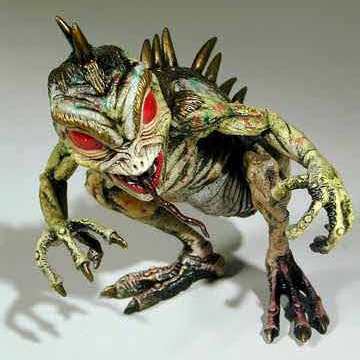
May 30, 2011
One creature that always seem to popup in my interviews is the Chupacabras. Below you can read what some of the researchers I’ve interviewed really think about the famous “goat sucker” and similar cryptids.

Neil Arnold: Zooform Phenomena is a unique study and I’m honoured that my book is the world’s first on a subject. Sure, authors such as Loren Coleman have touched upon some of these creatures but they are NOT part of cryptozoology. I do not know where they are from but I believe there are connections to the human psyche because such critters can be the product of anything from hysteria, hoax, misidentification or local dread.
The classic example of this is the Chupacabras, the ‘goatsucker’ of Puerto Rico. This vampyric beast has terrorised this island for centuries but only since the ’90s did it take on a form resembling a small-winged, bug-eyed bloodsucker with a feathery spine and small clawed hands, however, look back into south American folklore and you’ll find that the Chupacabras has always been here and has many so-called relatives, and the same can be said for the Bray Road Beast of Wisconsin, or the Mothman of West Virginia. Society creates these ‘demons’, and I’ve always been of the saying that if you believe in something enough it starts to happen, but, if no-one is there to see it, does it still appear ?
These are manifestations that produce a snowball effect. The Jersey Devil of the New Jersey Pine Barrens has resembled everything from a large cat, a small dragon and a bat, and it has existed for centuries but it’s NOT a flesh and blood creature and neither was Mothman, these are zooforms, strange entities with animal characteristics and they need to be collated together and NOT melt into the cryptozoological or paranormal void, they need their own place and that’s what MONSTER! is.
… Although I mentioned the Chupacabra earlier, it remains one of the most baffling monster mysteries of the modern era. Jonathan Downes is of strong opinion, after many years of research, that the beast is a porcupine, and his theories add up because it seems that many of the attacks on pets were not in fact made by an unknown predator, however, we all love a mystery and we have attempted to create a monster in the Chupacabra by connecting it to covert experiments, UFOs, the Devil etc, but every country has one of these bogeymen…that’s all they are, night prowlers no different from goblins and the mythical creatures we read about when we were kids. They’ll always be here in some form whether as Harpies or as vampires.
Mac Tonnies: Cultures all over the world seem to have a special affinity with insect intelligence, a theme we seem to see reiterated in Western pop culture’s eponymous image of the “Gray” alien. “Trippers” who ingest DMT sometimes describe similar insect-like entities. The question that naturally arises is whether we’re indeed making contact with an intelligence external to our own minds or else tapping into some neural legacy.
Colony collapse disorder is at least as disturbing, albeit for different reasons. The global die-off of bees reminds us how intricately connected we are with the planet. Ultimately, there are no dispassionate, clinical observers; we’re embedded in the experiment with no clear sight of its purpose — assuming, of course, that it has one.
Nick Redfern: As above, I’d say the Chupacabras. Having been on several expeditions to Puerto Rico looking for it, I don’t think for one minute that the Chupacabras is really some sort of pet or secret experiment of aliens. I think those theories are all laughable bollocks. But that scenario, of a vicious alien Chupacabras coming to Earth, and maybe finding its way to Britain, would be a very good one for a fictional TV show. If the production team want help, I’m here!
Richard Freeman: My colleague Jon Downes has investigated the Chupacabra in Puerto Rico. He concluded that most of the attacks on livestock were done by imported mongooses as well as feral dogs. He thinks that the spiny backed beast reported from the area is an unknown species of new world porcupine.
———————————————————-
I have a new ebook out, “PARA-NEWS,” which includes a cryptozoology chapter and where you can read the complete interviews with some of these researchers. You can buy it on Amazon US and Amazon UK.
About Richard Thomas
Filed under Chupacabras, Cryptomundo Exclusive, Cryptotourism, Jersey Devil, Mothman, Out of Place, Paranormal Investigators, Pop Culture, Room 101, Skeptical Discussions